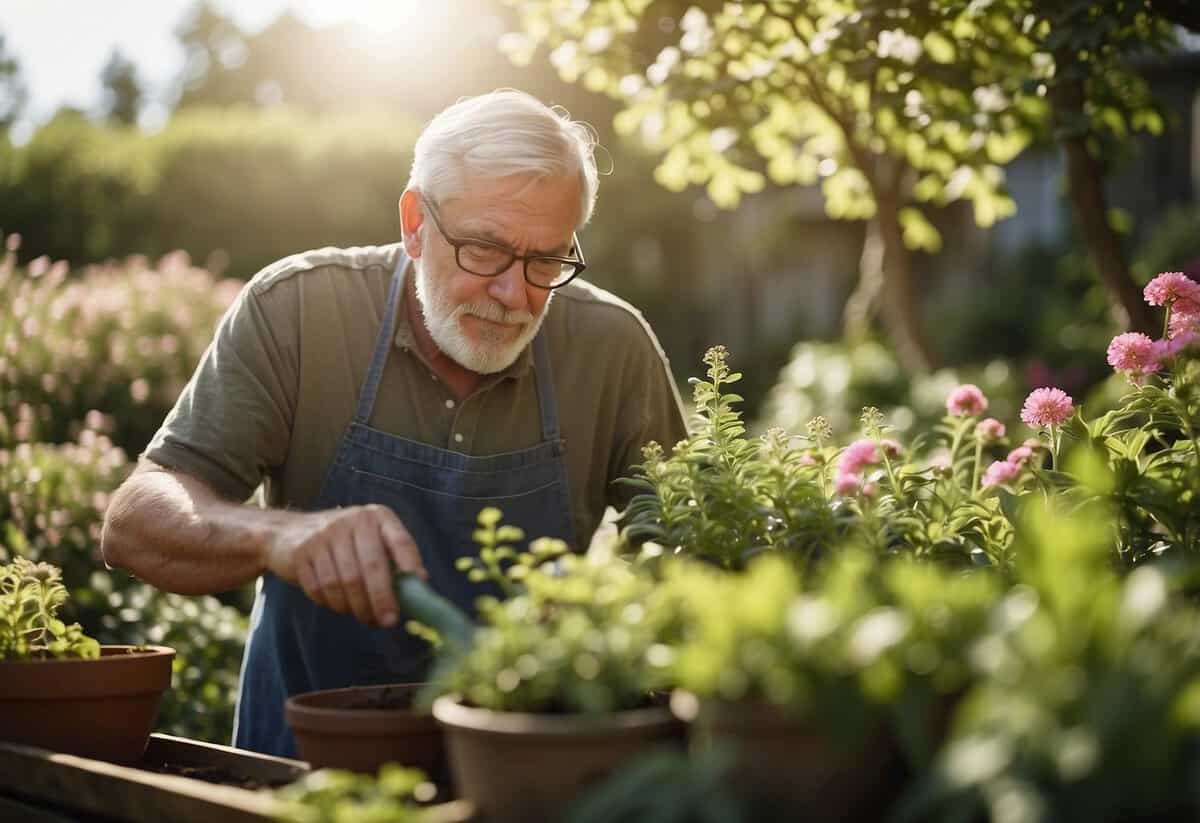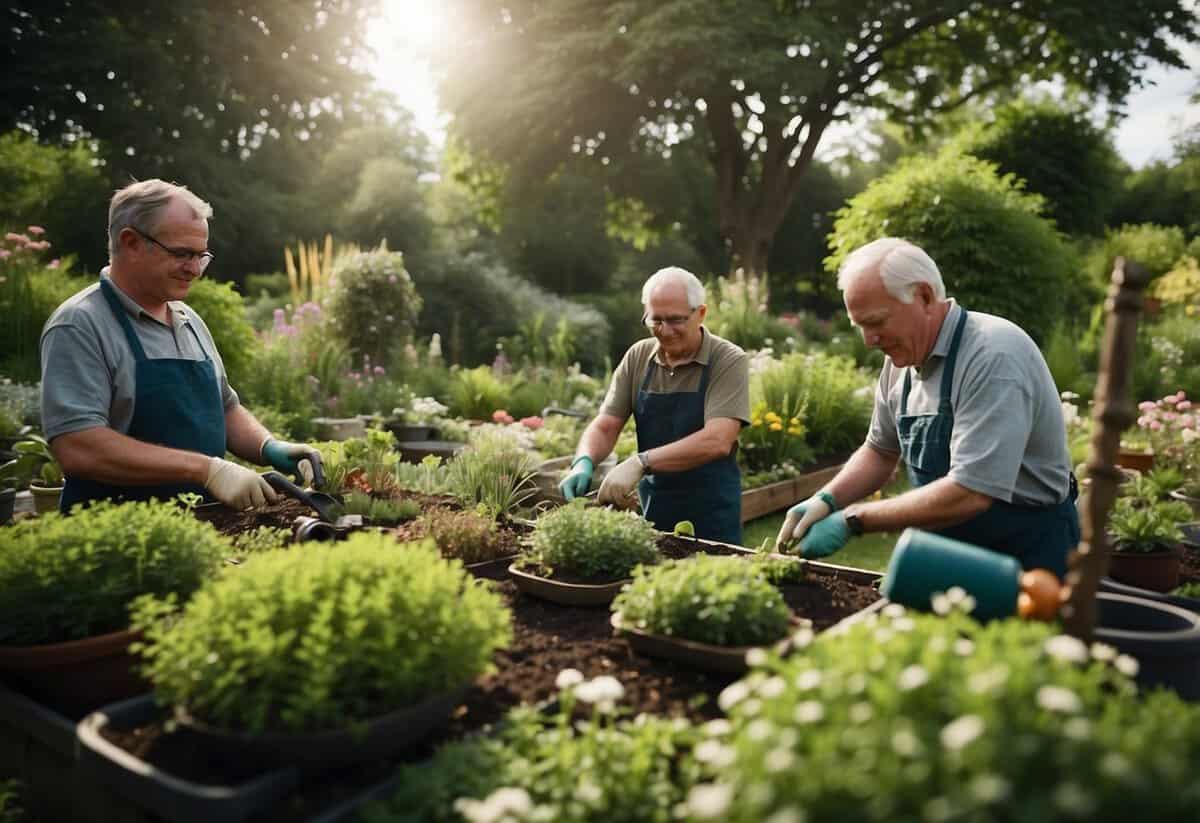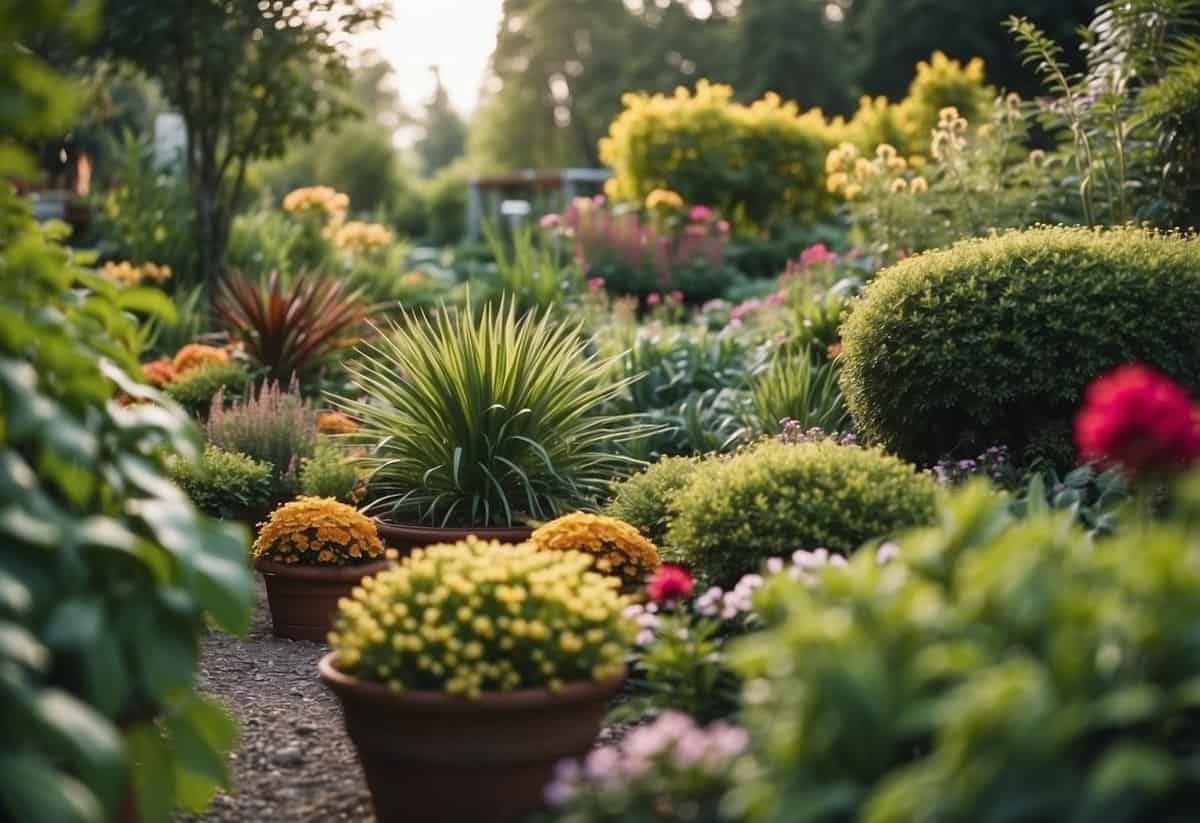What Age Are Most Gardeners? Discover the Typical Gardener’s Profile
Gardening is a popular activity enjoyed by people of all ages. If you’re curious about the age group that most gardeners fall into, you’ll find that the average age of a gardener in the United States is 41 years old. This fact makes mid-aged adults the most prevalent group in gardening activities today.

Interestingly, a significant number of gardeners are in the 35-44 age group, with many taking up gardening as a way to relax and connect with nature. Even during the Covid pandemic, this age group saw a rise in new gardeners, with many millennials joining the community. If you’re part of this age group, you’re in good company among fellow garden enthusiasts.
The National Gardening Association has noted that gardening interest spans across various demographics. While those above 40 dominate the landscape, younger age groups are also getting their hands dirty, particularly in community gardens. It’s clear that no matter your age, gardening offers a rewarding and enriching experience. If you’re looking to join this growing trend, now is a great time to start nurturing your own garden.
Demographic Overview

When looking at gardener demographics in the U.S., you see a mix of ages and backgrounds. According to the National Gardening Survey, millennials have shown increasing interest, with 29% of gardeners belonging to this group. This trend emerged during the COVID-19 pandemic, which brought 18.3 million new gardeners, many of whom are younger.
About 55% of American households engage in gardening. You might find that a typical gardener is around 41 years old, based on gardener demographics. This average age suggests a blend of both younger and older gardeners enjoying this hobby.
Gender distribution is fairly balanced but shows some interesting trends. Around 43.6% of gardeners are women, while 56.4% are men. Whether it’s a lush flower bed or a vegetable garden, more females have gardens at home compared to males according to recent stats.
In terms of ethnic background, most gardeners are White, making up 56.7% of gardening enthusiasts. Hispanic or Latino individuals come next at 28%, followed by Black or African American gardeners at 7.8%. This diversity shows that gardening is a hobby enjoyed by many different communities.
You might also be curious about how different age groups participate. Baby boomers, for example, have traditionally been a major segment, but the rise of millennial gardeners shows how this hobby is evolving with new generations. This blend of young and old adds to the richness of gardening culture in the U.S.
Gardening Trends and Preferences

Gardening activities are diverse and can cater to various interests. You might enjoy growing vegetables like tomatoes, cucumbers, and sweet peppers in your home garden. These popular crops are not only delicious but also rewarding to grow.
If you have limited space, consider container gardening. Many people in urban areas are turning to this method to grow flowers and edible plants. With this trend, you can create a beautiful garden on your balcony or even in your kitchen.
Houseplants are also gaining popularity. They can brighten up any space and improve air quality. Whether you’re a newbie or a seasoned gardener, caring for houseplants can be a relaxing and enjoyable activity.
Post-pandemic, there’s been a surge in creating sustainable gardens. People are more interested in homegrown vegetables and community gardens as ways to ensure fresh and healthy food. This trend supports a more eco-friendly lifestyle and lowers grocery bills.
Urban communities are seeing a rise in urban gardening. Rooftop gardens, vertical gardening, and community gardens are becoming common in cities, allowing you to grow your own produce even without a yard.
Here’s a quick look at some garden trends:
- Container gardening: Perfect for small spaces.
- Urban gardening: Growing food in city environments.
- Sustainability: Focusing on eco-friendly methods.
- Community gardens: Sharing plots with neighbors.
- Houseplants: Adding greenery indoors.
Adopting these gardening trends can bring both joy and practical benefits to your life. You can grow fresh food, beautify your home, and connect with nature, no matter where you live.
Psychological and Physical Benefits of Gardening

Gardening offers many psychological and physical benefits that can improve your overall well-being.
Mental Health
Gardening has been linked to better mental health. Spending time in nature can reduce stress and anxiety. The act of tending to plants provides a sense of purpose and ** calm**.
Physical Activity
Gardening is a great source of physical activity. It involves tasks like digging, planting, and weeding, which help you stay active. This can help you maintain a healthy weight and improve your strength and flexibility.
A Relaxing Hobby
Gardening can be a relaxing hobby. It allows you to spend time outdoors and engage in a creative activity. This can be particularly helpful during stressful times, like the COVID-19 pandemic, when many people sought ways to unwind during lockdowns.
Benefits for All Ages
Gardening is suitable for all ages, from children to older adults. It can be a shared activity among families, fostering better communication and bonding. It also keeps older adults engaged, promoting positive aging.
Connection to Nature
Interacting with nature through gardening can boost your mood and resilience. It provides a sense of connection to the environment, which can improve your outlook on life.
Gardening Industry
The rise in gardening activities during the pandemic has also highlighted its benefits. The gardening industry saw a surge as people looked for ways to stay occupied and enhance their living spaces.
By engaging in gardening, you can enjoy a wide range of physical and psychological benefits that enhance your overall quality of life.
Economic Impact and Industry Insights

The gardening industry has a notable impact on the economy. In the U.S., the demand for gardening tools and supplies has surged over the years. You can find that 55% of American households engage in gardening activities, showing a broad interest across demographics.
Spending in the U.S. garden market is significant. The National Gardening Association reports annual surveys to track this trend. Global online sales of gardening goods have even doubled during the Covid pandemic, reflecting the shift toward e-commerce.
Key Points:
- Employment: The average age of an employed gardener is 41 years old, indicating a seasoned workforce.
- Regions of Demand: Gardeners are in high demand in places like New York, NY.
- Industry Insights: 53% of gardeners work for private companies. The media industry offers the highest pay, highlighting the diverse sectors gardeners are involved in.
Local garden centers play a vital role in supplying your gardening needs. These centers offer a variety of plants, tools, and advice essential for your gardening success. The impact of the gardening industry extends beyond just plants—it’s a thriving market contributing to local economies and community well-being.
The gardening market continues to grow, with millennials making up 29% of gardener demographics, as noted by Garden Pals. This trend showcases the younger generation’s rising interest in gardening, impacting both demand and innovation in the industry.
Educational Resources and Community Involvement

Gardening is a great way to learn and bond with others. There are many educational resources available to help you get started or improve your skills. You can find lots of information online, at local libraries, or through community programs. Here are some useful options:
Online Resources:
- YouTube: Look for gardening channels for tutorials and tips.
- Podcasts and Webinars: Many experts share advice through audio and video.
- Garden.org: This site offers a wealth of articles and guides.
Local Community Gardens:
Community gardens are perfect for learning hands-on. They often hold workshops and events where you can meet experienced gardeners and get practical advice. Plus, it’s a chance to help your local environment and connect with people of different backgrounds.
Printable Guides:
Printable guides, like PDFs, are useful when you’re out in the garden. Websites like Cornell Garden-Based Learning offer downloadable materials to help you keep track of your gardening progress.
Inclusive Opportunities:
Gardening communities usually welcome everyone regardless of language or ethnicity. This makes gardening a great way to learn from diverse perspectives and share different cultural practices.
For example, a study from Youth Development Through Nature highlights the benefits of youth involvement in gardening activities, which promote health, growth, and environmental awareness.
By accessing these resources and participating in community gardens, you can improve your gardening skills, make new friends, and enjoy the many benefits of gardening.







